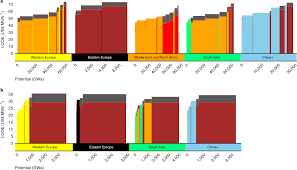Oil Prices Experience Notable Decline Amid Investor Doubt:
The global oil market witnessed a significant decline in prices, with a drop exceeding 2%. This downturn comes against the backdrop of ongoing deliberations and actions undertaken by the Organization of the Petroleum Exporting Countries (OPEC) and its allies, collectively known as OPEC+.

Background on OPEC+ and Production Cuts:
OPEC+, consisting of major oil-producing nations such as Saudi Arabia and Russia, has historically wielded considerable influence over oil prices through production cuts and output regulations. These efforts aimed to stabilize the market by balancing supply and demand dynamics. However, recent developments have introduced elements of uncertainty and skepticism among investors regarding the efficacy of these measures.

Investor Skepticism and Market Dynamics:
The primary cause for the recent decline in oil prices revolves around investor skepticism regarding the feasibility and impact of OPEC+ cuts. Despite ongoing pledges and agreements to curtail oil production, there are growing doubts about the group's ability to manage global supply effectively. Factors such as fluctuations in demand due to economic uncertainties, geopolitical tensions, and the resurgence of COVID-19 in certain regions have complicated efforts to stabilize the market.

Challenges Faced by OPEC+:
OPEC+ faces a delicate balancing act. On one hand, they aim to maintain oil prices at levels conducive to their economic interests while avoiding oversupply that could lead to a market glut and subsequent price collapse. On the other hand, they need to respond to the varying demands stemming from economic recoveries in different parts of the world, which presents a complex challenge.

Implications for the Energy Market:
The recent drop in oil prices underscores the volatility inherent in the energy market and the impact of geopolitical and economic factors on pricing. This fluctuation can have wide-ranging implications, affecting not only the revenues of oil-producing nations but also the cost structure for industries reliant on oil and gas.

Future Outlook:
The outlook for oil prices remains uncertain, as the market grapples with a multitude of variables that influence supply and demand. Investor sentiment will likely continue to be sensitive to developments surrounding OPEC+ decisions, geopolitical tensions, global economic recovery, and the ongoing transition toward renewable energy sources.
In conclusion, the recent 2% drop in oil prices reflects investor skepticism regarding OPEC+ cuts amidst a complex and evolving energy landscape. The delicate balance between supply and demand, influenced by various global factors, continues to pose challenges for stabilizing oil prices in the foreseeable future.




You must be logged in to post a comment.